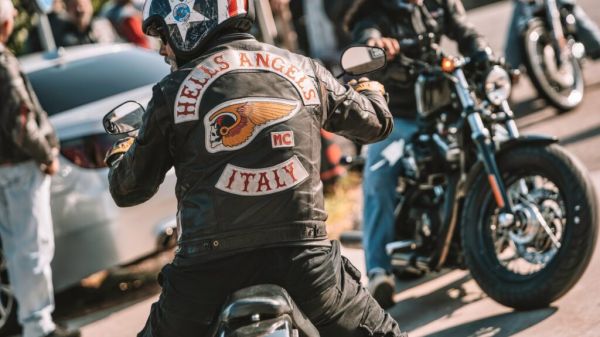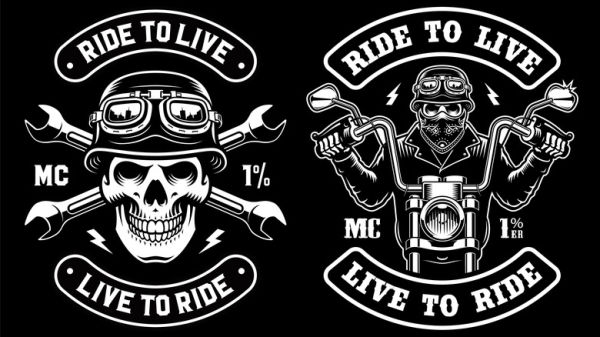You’ve likely seen them rumbling down the highway, a pack of riders on gleaming Harleys, their leather vests covered in intricate patches. You probably know those vests are a big deal for them. These vests are often called a “cut,” which is a name that dates back to the days when riders literally sliced the sleeves off their denim or leather jackets. Stitched onto those cuts, you may see a collection of patches — though in biker culture, those aren’t simply referred to as “patches.” That entire set is actually known as their “colors.”
So why “colors”? The term is the official slang for the distinctive patch arrangement that serves as a motorcycle club’s emblem. It’s not about the specific shades of thread, but what they represent. The word is borrowed from military tradition, where a unit’s colors refer to its flag or standard. They represent a sacred symbol of identity, honor, and allegiance that members defend. They’re worn for the world to see.
There’s also a deep history behind colors. The tradition kicked off back in the 1920s and 1930s, when the American Motorcyclist Association started handing out awards at its events for the best-dressed club. This was a friendly competition, and it encouraged groups to wear matching outfits, often with their club name simply stitched onto shirts or jackets. But this aesthetic shifted dramatically after World War II. Returning veterans formed their own riding groups to foster a sense of brotherhood, bringing with them a grittier, less regimented style influenced by their worn-in leather flight jackets. They transformed those early, simple club names into the elaborate, multi-piece designs. Today, they live on as powerful symbols of identity.
What it means to wear a color
Wearing those colors signifies a commitment to a specific brotherhood, one that in many traditional clubs is lifelong. These colors are often wildly misrepresented in popular culture, and there is a common misconception that motorcycle clubs are criminal enterprises. In reality, they form for all sorts of reasons, with some even dedicated to raising money for charity. Others are just brand-specific social groups for owners of certain brands of bikes. The most common clubs, though, simply belong to what’s known as the “99%,” and they ride purely for brotherhood and community.
Getting into one of these clubs is a serious process. You can’t just show up and get a vest. Prospective members, called “prospects,” must endure a long apprenticeship. This probationary period is designed to build pride in the club and prove the newcomer’s dedication. During this trial, a prospect may be allowed to wear a partial patch set, maybe a rocker that just says “Prospect,” signifying their status as someone under consideration. The journey to becoming a full member is a grueling test of loyalty and commitment. Only after completing this period does a prospect face a vote by the full members to be “patched in” – and finally earn the privilege of wearing the club’s complete colors.
Again, since colors are a visual language, the way they’re arranged says a lot. A single-piece back patch typically denotes a family-oriented or social riding club, while a two-piece patch often signifies a club in a transitional or formative stage. Then there’s the iconic three-piece patch, featuring the club’s name on a top rocker, its logo in the center, and its territory on a bottom rocker. This is the mark of a traditional Motorcycle Club.






